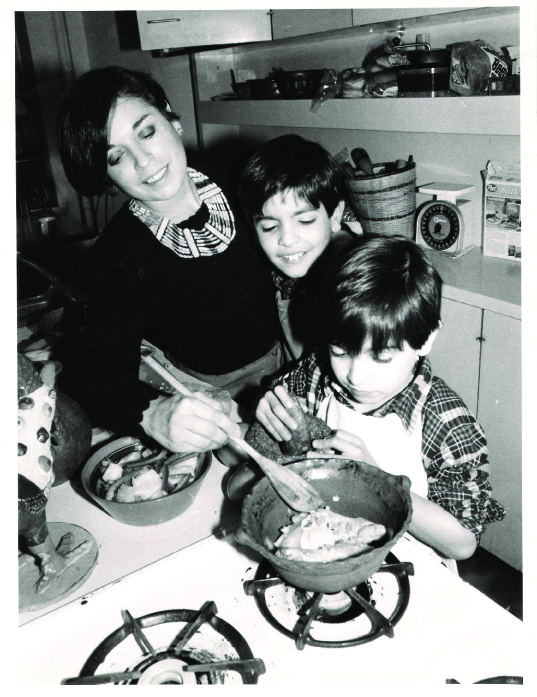
Thanks to trending on Twitter many, many new users have signed up for my website so I will be reposting some of the most popular articles like this one from my book Zarela’s Veracruz (Houghton Mifflin, 2001)
If you really want to cook like me…
It’s like meeting an accuser. Someone marches up to me at my restaurant or after a book signing and announces with an injured air: “You know, there’s something wrong with this recipe. I did everything it said to, and it didn’t taste anything like yours!”
I always try to do a little tactful detective work on the possible reasons for disappointment, but in my head I already know what happened: She used minute rice for the rice. He used clam juice out of a jar for the fish stock. She used some stale dried herb mix for the chopped fresh herbs. And they DON’T KNOW WHAT THEY DID!
The following hints are for people who honestly want their food to taste like mine and are willing to take a good look at their kitchen habits. I can’t guarantee that every recipe in this book will turn out like an absolute clone of the same dish as it might be made in my own kitchen or at my restaurants—there are a lot of tiny variables that no recipe on earth can do justice to. But I would like to point out some factors that make all the difference between singing the melody as written and whistling it off-key.
Remembering these precepts will make your cooking better no matter what type of cuisine you are interested in. Well, it’s true that some of them especially concern Mexican cooking, but the attitude behind them can be applied to all kinds of good cooking.
A dish can only be as good as the ingredients that go into it. The ingredients won’t be good unless you learn what “good” is and insist on it. So it is imperative to find a first-class butcher, fishmonger, and produce purveyor. Spend as much time as you can in their shops asking questions, until they know you mean business about quality. With that, you’ll already have half the battle won when you came home from shopping and unpack your purchases.
Any cook trying to get her or his bearings in a particular cuisine should be able to recognize some crucial ingredients and stock them in the pantry, refrigerator, or freezer. If you look at my recipes you will see that it is wise to have on hand:
Good tomatoes
White onions
Limes
Several kinds of dried chiles
Fresh jalapeños
Plain white rice
Fresh or frozen corn masa and masa harina
Dried black beans
Olive oil
Good butter
Good lard, preferably home–rendered
Queso fresco and queso blanco
True cinnamon
Cumin seeds
Homemade bread crumbs from good French or Italian bread; or
Lacking that, fresh soda crackers to crush crumbs
Homemade stock (chicken, pork, and fish)
Piloncillo or panela
Any serious cook should understand the difference between an ingredient that’s called for and a substitute or stopgap. It’s not that Mexican cooks never use substitutes. But they certainly know when they are using one!
For the Record…
Fresh herbs are not dried herbs. Even when their flavor may happen to be acceptable, dried herbs will never contribute body to a purée-based sauce, as herbs are meant to in many of these recipes.
Homemade chicken stock or pork stock is not water, and it isn’t a bouillon cube or powdered base. (Mexican cooks do use these—but as a flavoring ingredient , not to replace stock.) In a pinch, canned low-sodium chicken broth will do—but do not take this as a blanket endorsement.
Fish stock (made at home or purchased from your fishmonger) is not bottled clam juice.
Fresh fish, poultry, or meat is not equivalent to the same thing frozen and thawed. (Unfortunately, none of us has any choice with some kinds of seafood, like shrimp and conch—virtually everything in the stores here has been frozen.)
Limes are not lemons, and freshly squeezed lime juice is not bottled lime juice.
Plain white rice is not instant rice, converted rice, or a pre-seasoned “pilaf” mix.
Butter is not margarine, and lard is not vegetable shortening. Olive oil is not some nameless vegetable oil or treated “light” olive oil.
True cinnamon (canela) is not stuff labeled cinnamon in our stores, which is really a relative named cassia with a totally un-Mexican flavor.
It is equally true that one cooking method is not another. You will never achieve the right results with tomatoes, chiles, garlic, and onions unless you realize that griddle roasting is not oven-baking or broiler-roasting. The only method that brings out the natural sugars of these ingredients is dry-roasting the vegetable on a griddle or heavy bottomed skillet.
It is usually a bad idea to radically change the amount given for any ingredient in a recipe. (This often happens when well meaning people are trying to cut down on fat.) Using more or less of one ingredient can throw off the whole “orchestration”.
By the same token, leaving out any stage of the recipe—for example, chopping fresh ingredients as directed, frying something in fat before cooking it in liquid, or working a processed mixture through a mesh sieve—guarantees that you will never get the desired result.
Spices are best bought very fresh, in small quantities. When a recipe calls for ground spices, it is infinitely better to grind them yourself. First toast them for a minute or two in a small skillet over medium or medium-high heat, then grind them using an electric coffee or spice mill or a sturdy mortar and pestle.
The extra something…
Beyond the fact that I use good ingredients with great care, I have to say that quite often my food tastes as it does because “I did it MY way.” This is not to put down cooks here or in Mexico who would do it another way. But my passion is certain kinds of distinct, rounded, many dimensional flavors. As a restaurateur, I am constantly searching for ways to enrich and define the flavors I’m working with. And, like any cook, I also have my pet ingredients that are just part of my palette. Here are the most important examples of what I do to make a dish “mine”.
In my kitchen olive oil is always extra-virgin. I use a premium fruity oil for salads, one with less pronounced flavor for sautéing and frying.
When I use a vegetable oil (for example, for deep frying) it’s always corn or safflower oil.
In recipes calling for sherry, I use a fino.
For most rice dishes, I like to use a medium grain variety (preferably imported Valencia).
I have a constant struggle to get the pork here to taste like pork instead of cardboard. I usually buy it bone-in (shoulder butt is the best cut) , bone it myself, and simmer the bones in the pot along with the meat.
As another aid in the search for flavor, I’ll regularly add a frying step to recipes that might not have originally had one. Herb or spice mixtures and pureed sauces always have more depth if fried in a little fat before being combined with the other ingredients.
Supermarket chicken is another product that needs all the help it can get. If I can’t buy a nice, tasty free-range chicken, I almost always try to give a mass-produced one a little boost by briefly cooking it until golden in a small amount of fat before adding it to a sauce or soup.
I am very extravagant with homemade stock. Being a restaurateur, I always have a plentiful supply on hand and can use it unstintingly where other people might use water. I know that this generosity with stock might not be practical for every home cook. But I think anyone will get immeasurably better results by using chicken stock to cook rice or pasta pilaf style, soften dried chiles, poach chicken breasts, and make most soups. The same goes for using fish stock to poach the seafood that will go into salads, fillings, seafood, and rice dishes, and almost any dish that calls for a seafood mélange. The more often you can make up a good batch of stock and have it in your freezer, the richer and fuller a dish will be.
The same is true of home-rendered lard. I hate to run out of it, because it is vitally important in so many different kinds of dishes. I like to be able to count on the flavor of lard the way some people count on salt and pepper. Get in the habit of making up a modest-sized batch at frequent intervals, and you won’t have to groan and rack your brain for bad substitutes when you see it in my recipes.


